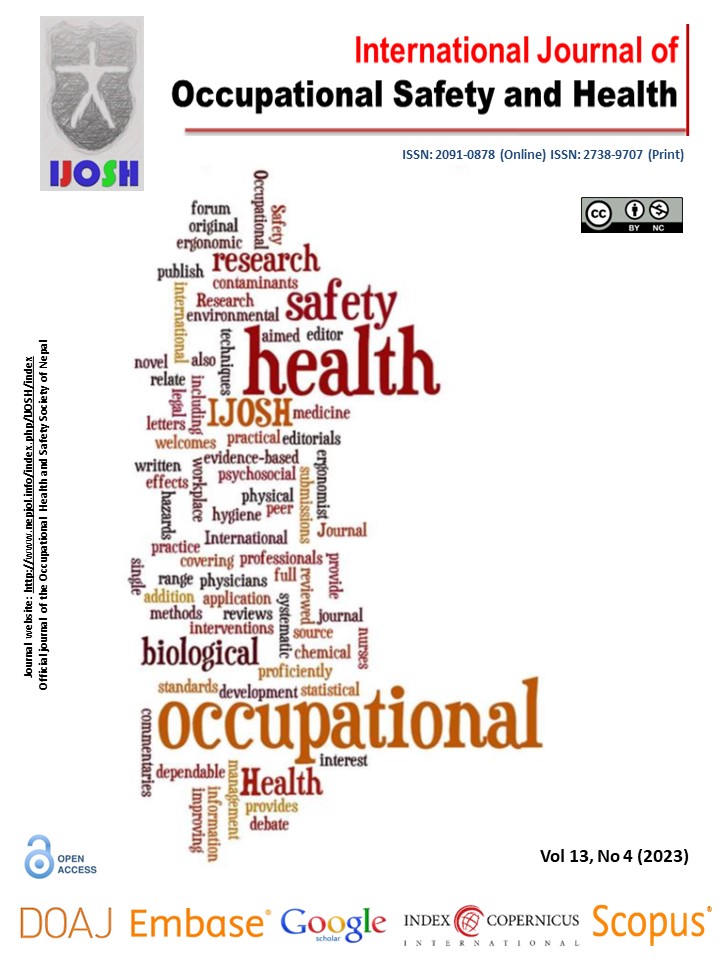Evaluating the correlation of blood pressure and pulse rates of firefighters with their sociodemographic characteristics during a fire and rescue training
DOI:
https://doi.org/10.3126/ijosh.v13i4.48886Keywords:
Blood pressure, Firefighters, Heart rate, Hypertension, TrainingAbstract
Introduction: Cardiac strain has become a prevalent cause of firefighters’ death. Standards and regulations set forth a framework to monitor the cardiovascular fitness of firefighters, encourage fitness and create a pathway to diagnosis or detection of disorders. The effectiveness of these standards relies on continuous evaluation of firefighters’ health and updating the protocols.
Methods: This study intended to assess the physiological response of 172 firefighters in the middle east for the first time and considered the effect of body mass index, age, gender, and seasonal ambient temperature on their responses before and after a fire and rescue training. The end results should compile the behavioral patterns of firefighters from the region and help authorities to update current health monitoring standards for firefighters accordingly. Blood pressure, heart and respiratory rates were sampled for participants after one minute after when training finished. Non-Parametric statistical analysis was conducted using Nonparametric Spearman rank correlation coefficients and Kruskal-Wallis H- test to evaluate the correlation of age, gender, BMI, and seasonal temperature with participant’s physiological response.
Results: This study found obesity in 20% of the sampled population with more cases among male participants. Also, in this study, the hypertension prevalence ratio found as 19.8% at baseline and 26.7% in post-training measurements.
Conclusion: This study could confirm that body mass index and seasonal ambient temperature affect blood pressure, heart and ventilation rates. Heart rate significantly changes with ambient temperature. Also, the results found the gender of participants affects all physiological responses, especially heart rate.
Downloads
Downloads
Published
How to Cite
Issue
Section
License
Copyright (c) 2023 Javad Hashempour, Mohammed Alkhamees, Mohammad Shahnawaz Khan, Jeff Kimble, Hayri Sezer

This work is licensed under a Creative Commons Attribution-NonCommercial 4.0 International License.
This license enables reusers to distribute, remix, adapt, and build upon the material in any medium or format for noncommercial purposes only, and only so long as attribution is given to the creator.





